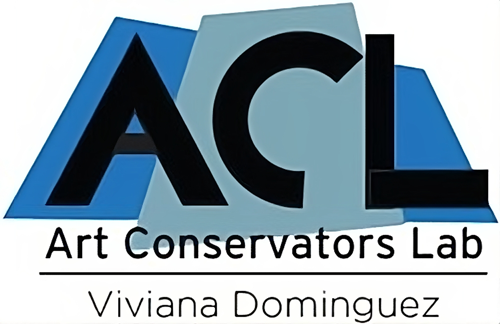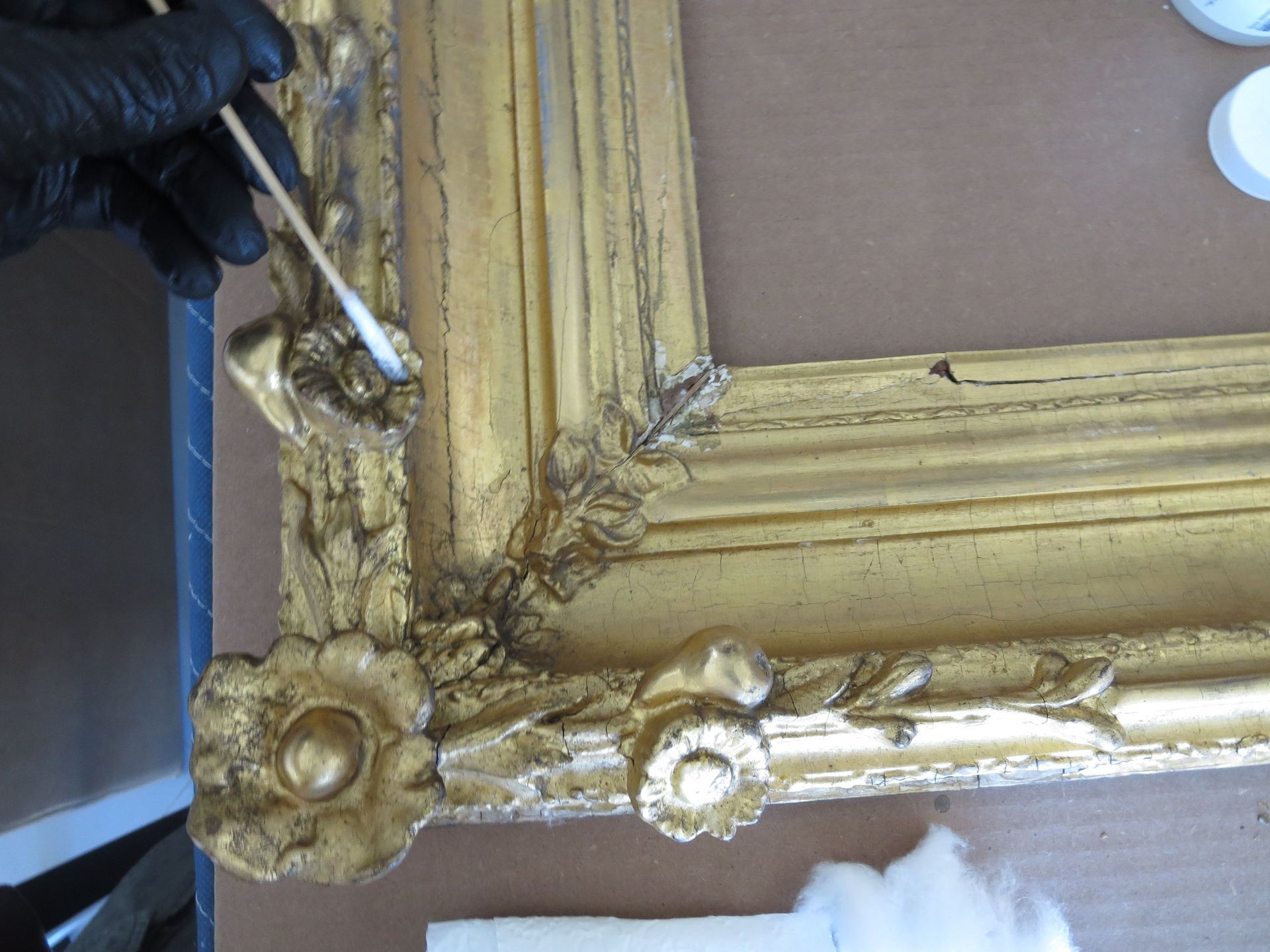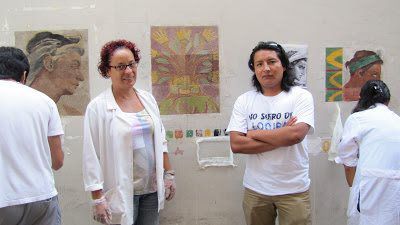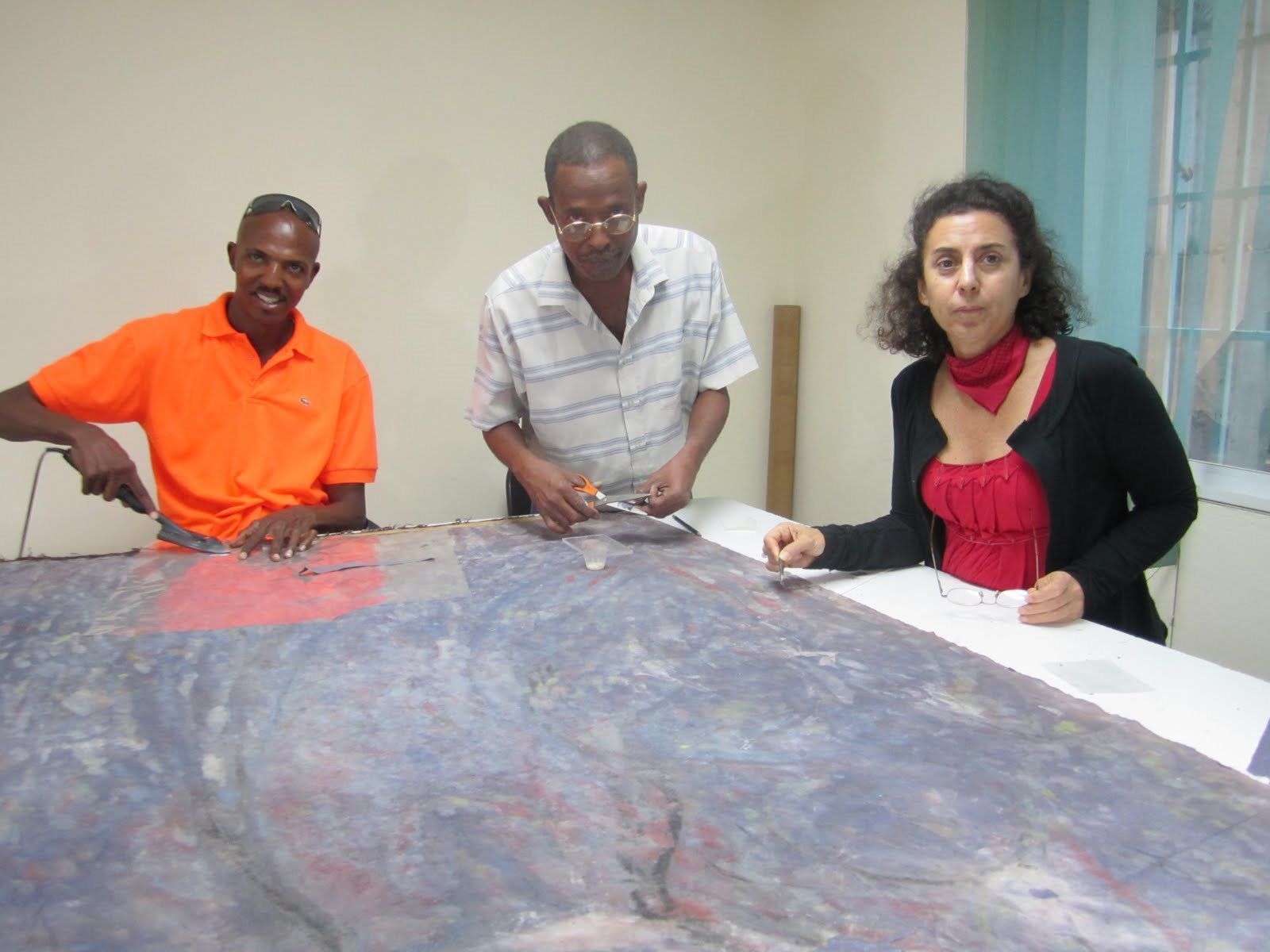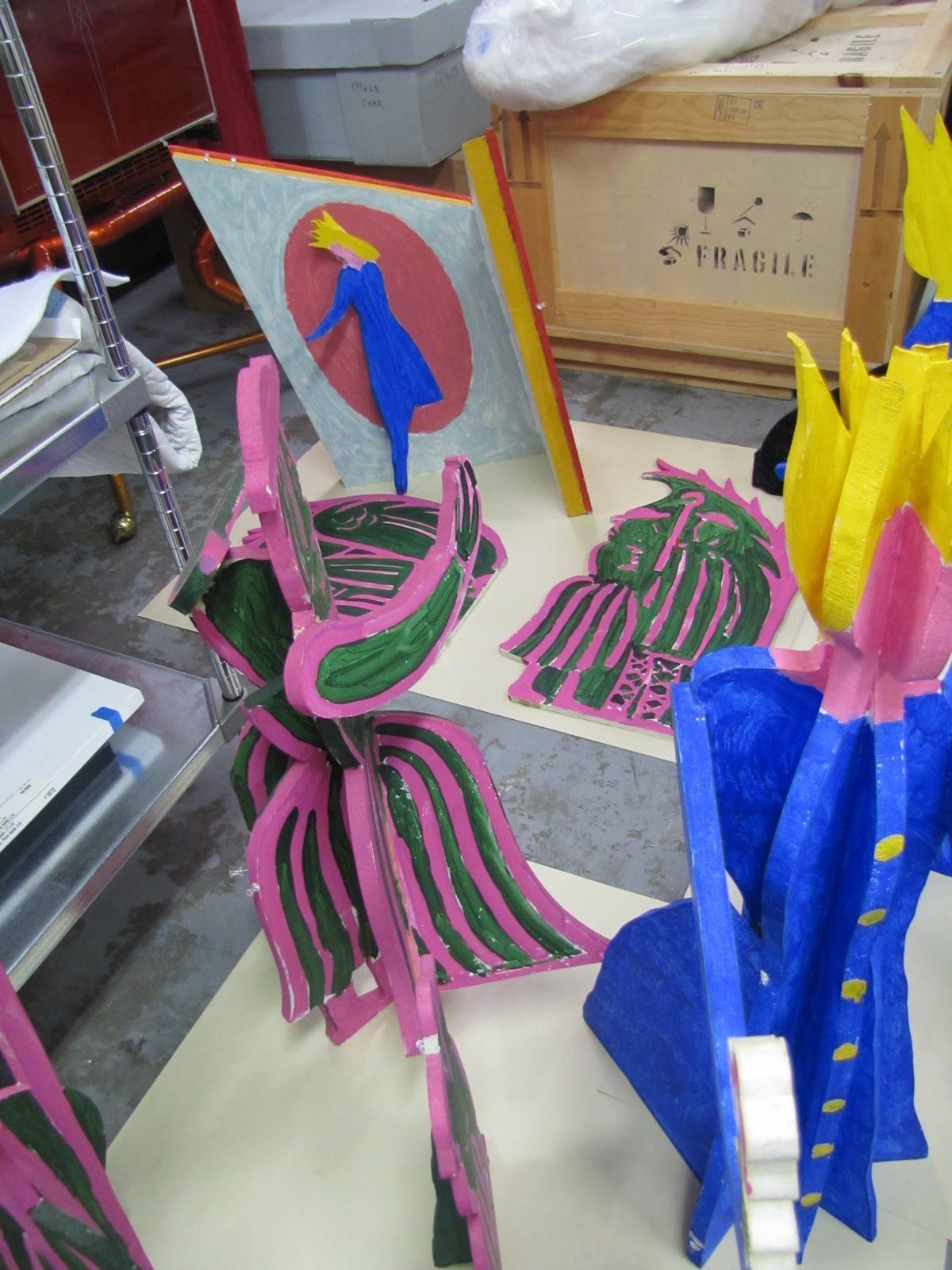Address: 2001 Biscayne Blvd, Miami, FL 33137
Call Us Today: (786) 973-8138
Address: 2001 Biscayne Blvd, Miami, FL 33137
Call Us Today: (786) 973-8138
Conserving WPA Murals in Key West City Hall
by Viviana Dominguez, Chief Conservator, Art Conservators Lab
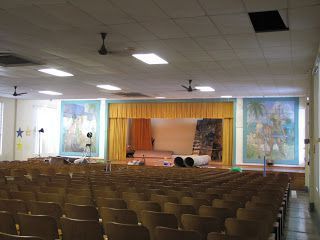
Glynn Archer Elementary School Auditorium and Hoffman's Murals
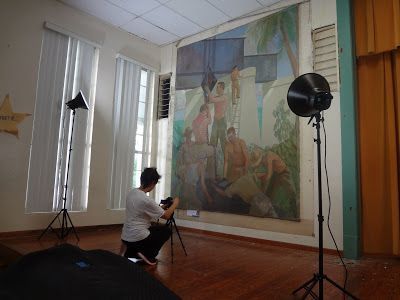
Photo-documenting the mural. Workers building Florida East Coast Railway to Key West
William Hoffman, originally from Savannah, Georgia, was one of the many artists invited in the late 1930’s to beautify the city of Key West as part of a rehabilitation and beautification program to promote tourism. The large oil on canvas paintings were created on the walls of Key West High School and represent historic Key West scenes: the Spanish conquistadors arriving to “Cayo Hueso”, and the construction of the Florida Coast Railroad that ran from Jacksonville to the Keys. Since 1936 the murals were the focus of attention for the students, teachers, alumni and parents, who today still hold fond memories of their time at Key West High School, now known as Glynn Archer Elementary. In 2013 the murals were removed due to remodeling of the structure completed by Bender and Associates. It will soon reopen as the new Key West City Hall.
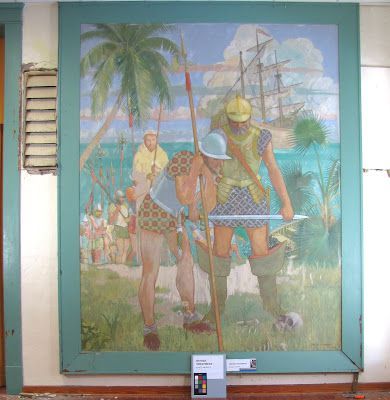
Mural of the Spanish conquistadors arriving to Cayo Hueso. Before treatment in school auditorium
Following the necessary conservation steps, I performed a thorough examination of the murals with the help of magnifier glasses using UV and raking lights while documenting their initial condition with a digital camera. Dark areas do not emit light while efflorescent areas do so the UV and raking lights help to distinguish old from new paint. The lights unveiled alterations, repairs, and over-paint that the naked eye cannot see. For example, students had left marks on the surface including scribbles, tags, and names or did additions to the drawings. Once I established the causes of deterioration, both inherent to the piece and related to the environment, I was able to determine the conservation protocol to be followed. The project was divided in three phases; the first one was focused on the stabilization of the murals and their safe removal from the walls. Furthermore, they were dry-cleaned and insect deposits were removed.

To the left the UV light radiation is showing old overpaint on the conquistador's clothing

Removing grass and insect deposit from the back of the canvas
The murals were then prepared for packing and rolled to a large hard cardboard cylinder protected with a non-woven synthetic fabric
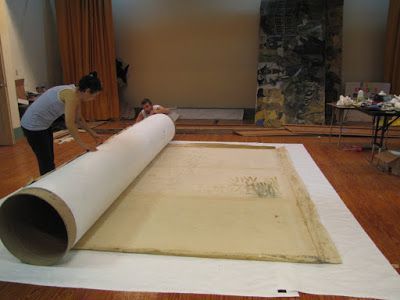
Working on the auditorium's theatre stage
The second phase involved the more complex aspects of the treatment. Murals were transferred to the Custom House Museum on Front Street for conservation.
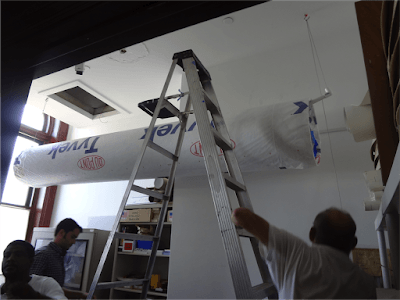
One of the murals stored inside the Custom House Museum
At the Custom House, a small room was prepared to store the murals. Now rolled in Sonotube, they were hung from the ceiling so that the painting’s own weight would not crush the paint layer. Thanks to the Key West Art & Historical Society and Museum Director Michael Gieda, one of the museum’s galleries on the second floor was rearranged and prepared to hold a conservation studio. The conservation phase began a few months later.
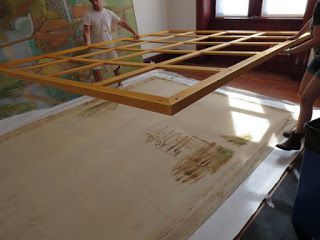
Phase two at Costume House Museum
Inside the museum's gallery where the conservation of the murals took place. One of the murals is facing down . The artist tested his color- pallete by brushing paint on the reverse of the painting (see reverse of canva. The new stretcher is being placed.
New wood mechanical stretchers arrived from California to re-stretch the murals as the old ones were warped and in very bad condition. The conservation team dry-cleaned the reverse of the canvas several times, and holes produced by termites were secured by mending them with canvas fibers. Strip lining was necessary on the bottom edges where the short tacking canvas wouldn’t provide enough fabric for proper stretching.
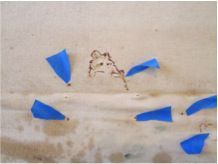
The photograph shows areas where insects ate through the canvas
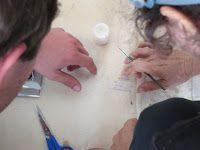
Repairing holes and canvas losses
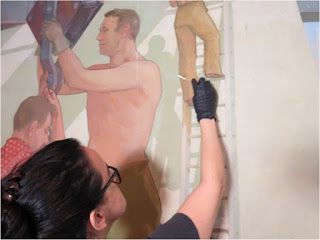
Removing fiber markers scribbles with a solvent rolled with cottons swabs
We then cleaned the overall surface with special conservation dry sponges. Mechanical methods, such as scalpels, were used to remove scribbles painted on the surface. Solubility tests were needed in order to determine the appropriate aqueous cleaning solution for the removal of the more sturdy painted tags and the over-paint. In many areas, a solvent-gel solution was also necessary.
Planar distortions were flattened with moisture and pressure. Scratches and abrasions were filled with a vinyl type mixture, and the color losses were retouched (impainted) with a stable and reversible resin-pigment mixture.
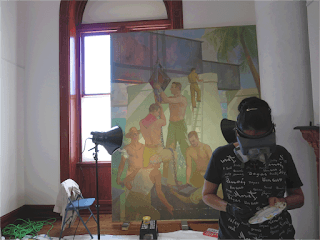
Preparing the color pallets for inpainting losses of paint layer
Three coats of a varnish with UV stabilizers were applied to protect the surface from the light and air-borne pollutants.
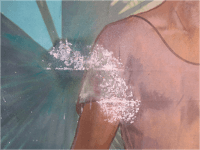
The arm of one of the workers with paint losses
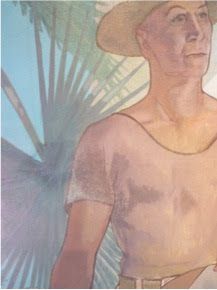
The worker's arme after imprinting
Framing in Paradise (Susan and Bobbie D’Antonio) handcrafted brand new frames from wood and were colored with patina. For transportation purposes the frames were specially fabricated so that they could be easily disassembled and re-assembled.
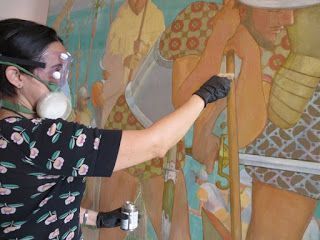
Applying a coat of retouching varnish
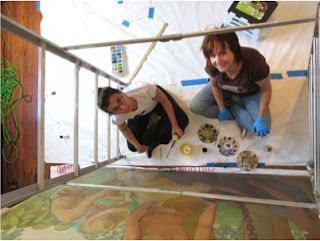
Selecting colors for inpainting losses
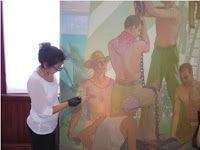
Consolidating flaking paint
After almost a year of being exhibited at the Custom House Museum, the murals were once again moved. The move and installation was very challenging and was graciously completed with the efforts of contracted professionals, volunteers, and county staff. The murals are presently being appreciated at the Key West International Airport.
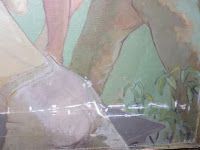
Filling losses
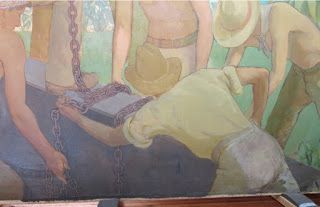
After inpainting losses
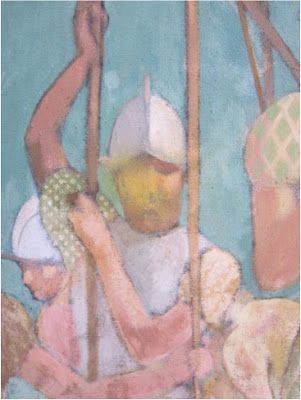
Conquistador's face covered with yellow paint
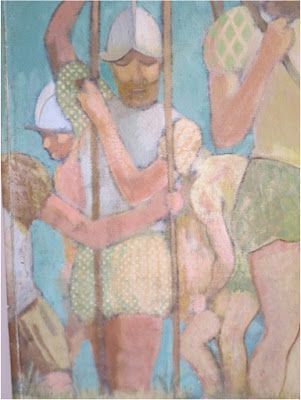
After removing overpaint and color touch up
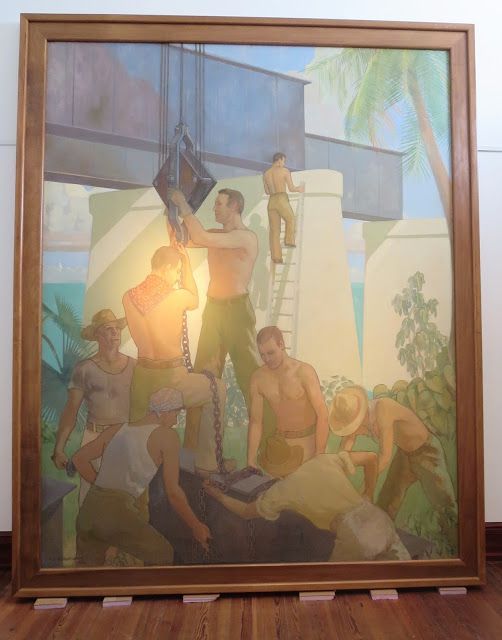
Mural after treatment with new frame
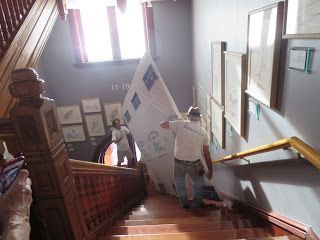
Removing the mural from Custom House Museum
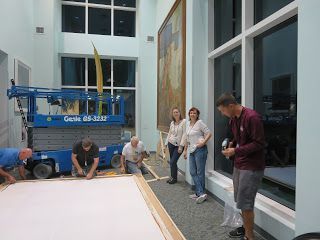
Installing murals at Key West International Airport
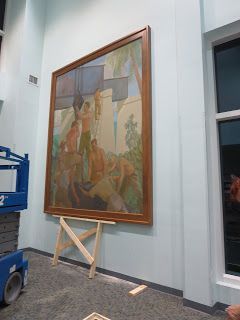
Shoring one of the murals during the installation at the airport
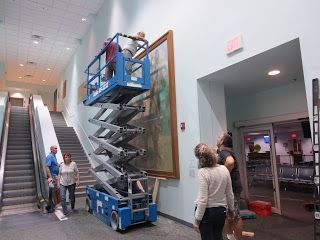
Securing mural to the wall
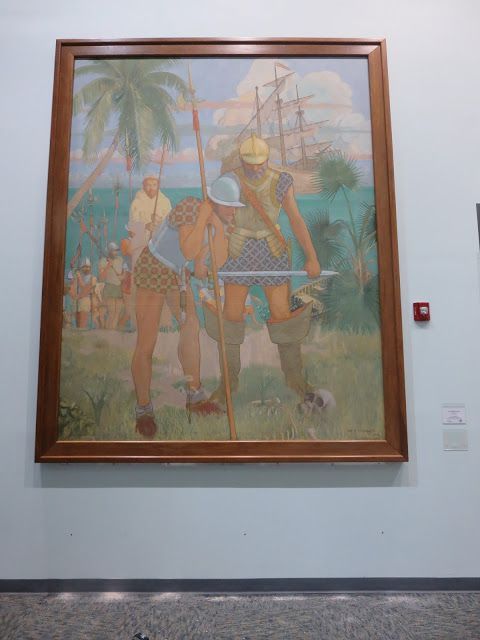
One of the murals now housed at the Key West International Airport
Phase three will be the re-installation of the two murals at the auditorium of the newly Key West City Hall that is still undergoing remodeling.
Acknowledgment
Conservation Team:
Viviana Dominguez, Chief Conservator/Project Director
Stephanie Mora, Conservation Technician
Susann D'Antonio, Artist
Tom Joris, Artist/Restorer
Rennie Disrud-Joris, Artist
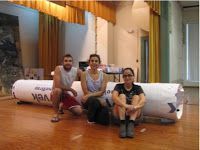
Rennie Disrud-Joris, Viviana Dominguez and Stephanie Mora (left to right)
Moving and installation team:
Torch Art (Bobbie and Susann D'Antonio)
Collaborators:
Elizabeth S. Young, Key West Council of the Arts Executive Director
Key West International Airport Staff
Specials thanks for their support to:
Bert L. Bender, Architect at Bender and Associates
Key West Art Historical Society
Michael Gieda, Director at Custom House Museum
Staff at Custom House
Bobbie D'Antonio, Elizabeth Young, Susann D'Antonio
Michael Shields, Key West Art in Public Places Board
Nance Frank, Director Gallery on Green
Daina Katubi
Nancy Bender
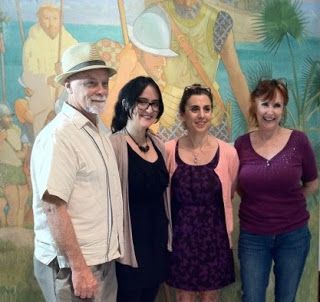
Michael Shields, Stephanie Mora, Viviana Dominguez, Susann D'Antonio
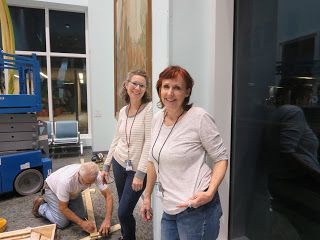
Bobbie D'Antonio, Elizabeth Young, Susann D'Antonio
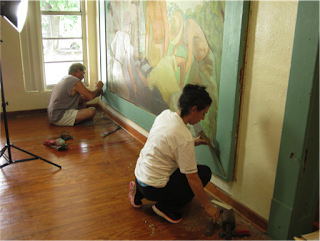
Tom Joris and Viviana Dominguez
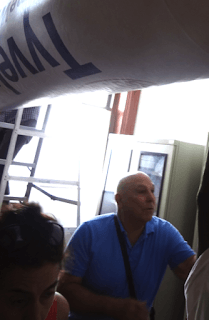
Bert L. Bender
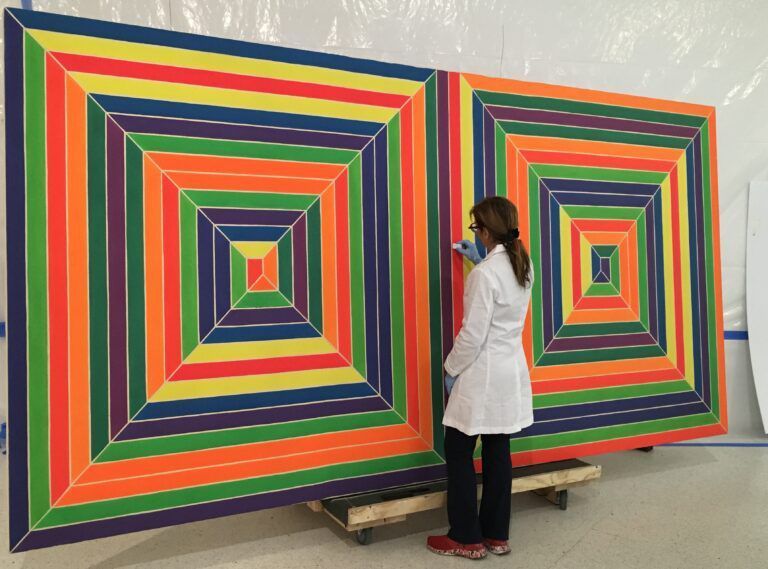

Address:
2001 Biscayne Blvd, Miami, FL 33137
Phone:
Art Conservators Lab LLC
